Finally, a taste of real racing
One of a series of posts about the racing antics we got up to before arriving in competitive karting. Check the overview for links to other posts in the series.
I vaguely remember the first time I saw Bruce Malanka. He was driving a very loud half-naked Formula B car on a public street in downtown Ottawa.
“I was preparing the car and had to start it after installing the motor by myself and ended up push starting it down the street. I turned the car around at the local body shop and drove back to our lane way rather quickly as it was a public road”, says Bruce.
I caught a momentary glimpse of the purple racing car as I drove my VW past the side street. But that’s all it took for me to turn around and introduce myself. I met Scott MacKenzie, the driver, later in the day and somehow weaseled my way onto the team.
It was a timely event because if I wanted to be a racing driver, I needed to understand everything I could about racing cars, racing teams, and what made a car quick.
When I first met Scott, he had a disassembled Lotus Super 7 in his garage — the first one I’d ever seen. He’d raced it at Mosport with a Brian Hart twin-cam engine. He said the tachometer reached 8300 rpm at the end of the Mosport straight which meant about 155 mph. He called it “scary”.
We talked about me learning how to build an engine from him. Between his racing car and the Lotus Super 7, it seemed like there’d be plenty of opportunity.
Scott had started racing in the Canadian Players championship for Formula B cars that year. At the time, it was the go-to series for most Canadian single-seater drivers and was on the cusp of commercial success. In subsequent years it would help produce drivers such as Bill Brack, Bertil Roos, and future F1 star Gilles Villeneuve.
Scott had a black Brabham BT35 (chassis 18) racing car and was sponsored by Bryant Cougle of Astro Sports, a sports equipment shop in Nepean, near Ottawa. He took 11th place in his first start at Westwood raceway near Vancouver — pretty good for his first time out. But at the next event in Edmonton he crashed heavily, damaging the car beyond immediate repair. More significantly, he injured his neck which meant he couldn’t drive for the remainder of the year.

The team bought another Brabham BT35 (chassis 24) through Fred Opert Racing and painted it in the more familiar purple and orange colors. Canadian driver Ric Forest, who in 1972 had driven a March 722 to 3rd place overall in the Canadian Players championship took over driving duties for the rest of the year. He didn’t disappoint: he won at Gimli Manitoba and took and 6th and 2nd at the two races at Mosport in July and August.
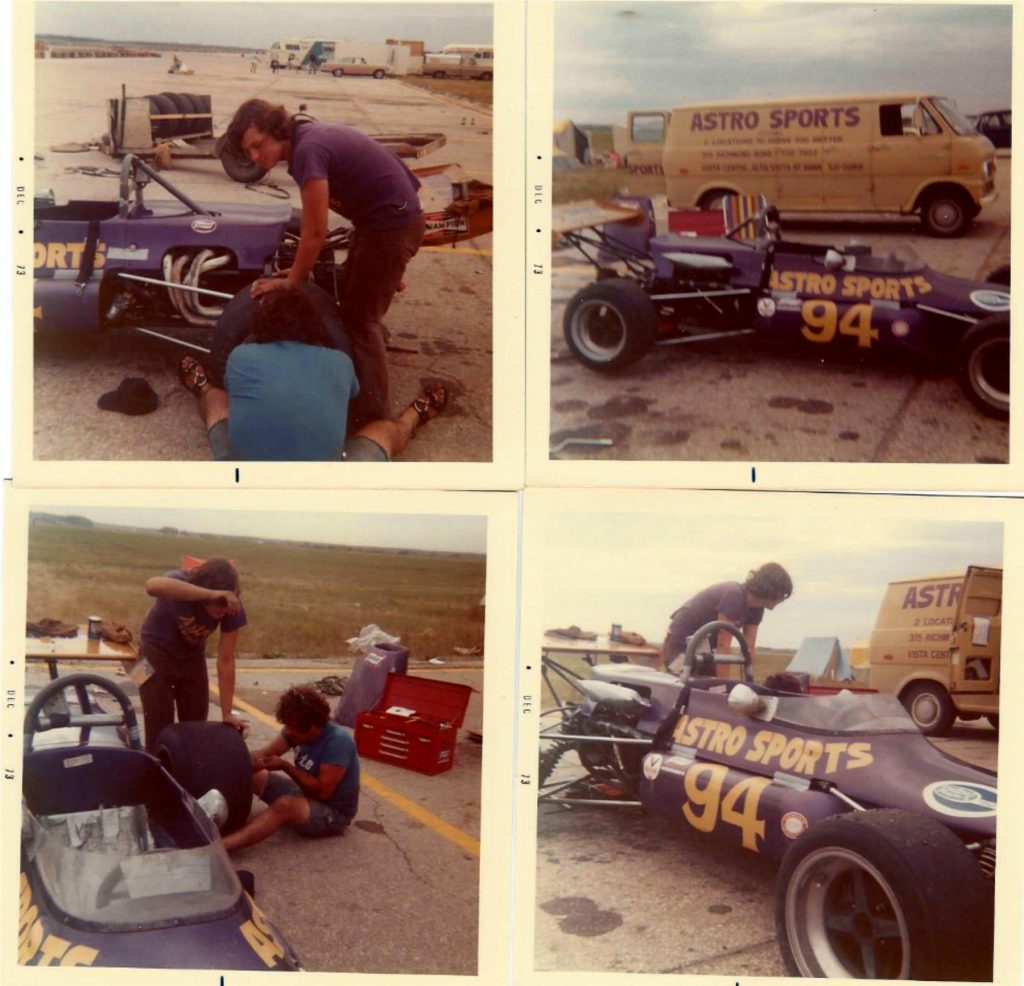
I joined the team before the next race at Trois-Rivières in Quebec, which is a Monaco-esque street race run around the city’s fairgrounds and was extremely popular with international drivers.
I remember travelling to the race with Scott and race technician Bruce Malanka. Bruce was about my age or just a little older and had a dry sense of humor and a perpetual impish grin.
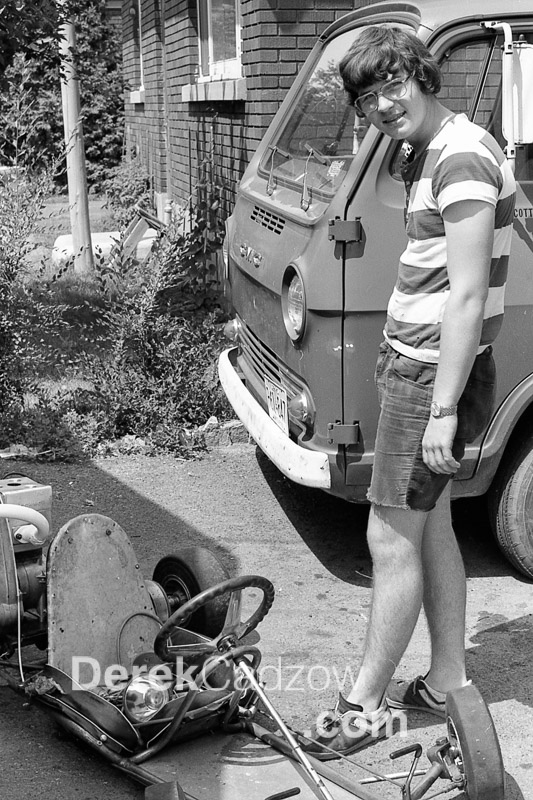
As we waited outside the gate for our passes to arrive, Scott got me to climb to the top of the solid fence so I could confirm his guesses on the make of the cars whizzing by just by the sound of their engines. He was pretty accurate!
Our team had a big job in front of it. The car’s regular Brian Hart twin-cam engine was in need of repair and the team had managed to borrow a Titan engine from another team. However the two engines were quite different and fitting it to the car and the gearbox was going to be a lot of work.
Bruce and Scott got started immediately and continued through both days and nights right up till race time. I tried to do what I could to help, but that wasn’t much and I spent most of my time just watching and learning. By the time Sunday rolled around, Bruce was almost walking in his sleep.
One of the last things to do was put on the wheels and set the torque correctly on all the wheel nuts. This was something I could do!
Just as I finished, the driver undid them all and re-torqued them. I just rolled my eyes. But I later learned that this was a task all drivers do to ensure that the wheels don’t fall off during the race…
The Titan engine was in and ready to go just as the starting grid was forming up. We pushed the car out onto pit lane and Ric drove away on the formation lap. Since he’d not been able to practice or set a qualifying lap, Ric lined up at the back of the thirty-five car field.
In 1973, the Trois-Rivières race cars started from a dead stop, otherwise known as a standing start. When the flag fell, thirty-five drivers dropped their clutches and screamed away in a big cloud of smoke and dust.
Ric made up several spots on the first lap and was consistently passing other drivers as each lap went by. Almost every time he came by the pits, it seemed like he’d passed more drivers. By lap 27 he’d made up 14 places on his march to the front.
Then, just as we were getting excited about our chances, an oil line on the engine let go and that was the end of our race – just as quickly as that.
It was quite a let down for all of us after the dogged determination to get the engine in, and then the excitement of the race. I think Bruce and Scott felt it the most. I half expected one of them to be sitting in the car fast asleep.
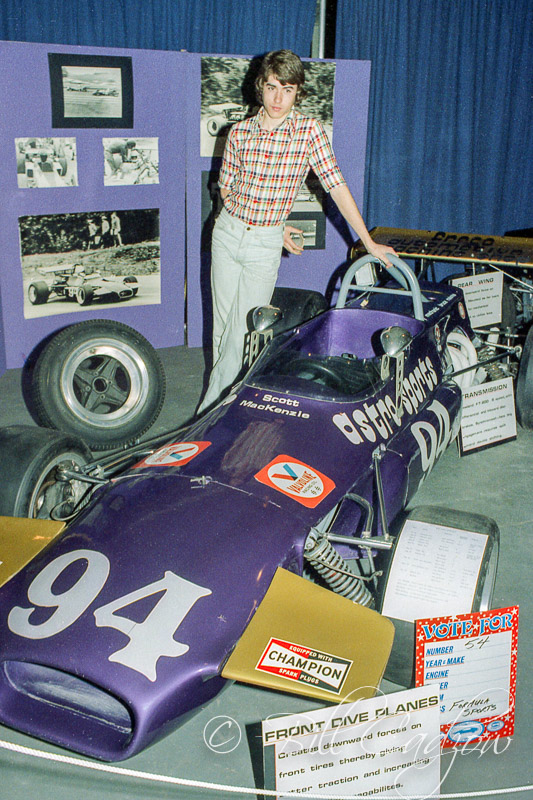
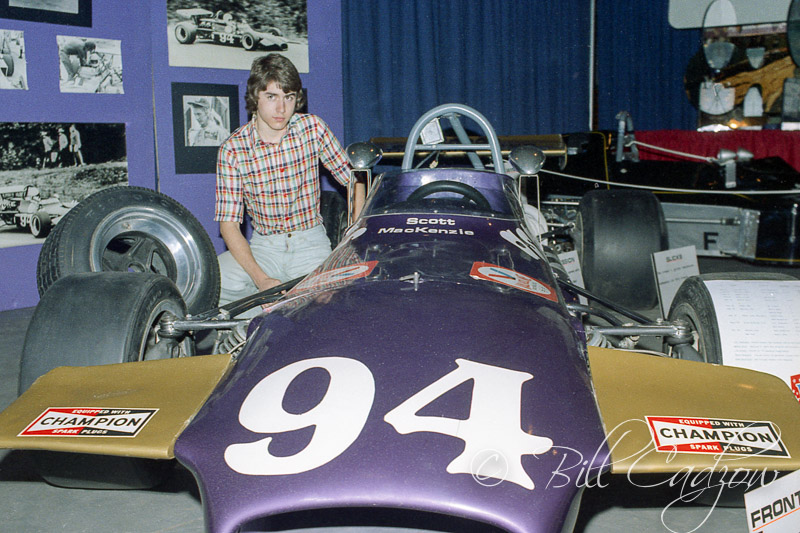
This is going to start sounding repetitious: My Dad wanted me in the pictures with the car. I thought that was a great idea and didn’t object. But there are others of me sitting in this car with a helmet on (and in another car whose driver we didn’t even know) and I’m just NOT going to post those…
The next trip I took with the team was to Road America near Milwaukee, Wisconson, which was a race obviously not in the Canadian championship. For this race, driving duties fell to Formula Ford and SuperVee driver Dave McMillan from New Zealand.
For me, the main excitement on this trip occurred off track, starting with the customs agents at the Windsor-Detroit border.
It’s a 19-hour trip from Ottawa to Road America and Bruce, Bob Pasternak, and I travelled in a Ford van towing the Brabham on an open trailer. It was 1973 and the middle of the OPEC-fueled fuel crisis, so we could only get limited amounts of gas on the freeway and had to stop often.
Heading for 1970s Detroit with an open trailer and a racing car on the back was a bit daunting. In fact, Bob said that if he hit a red light in Detroit he would just keep going as he expected all the wheels on the race car to disappear if he had to stop even for a few minutes!
Of course, coming from Canada, we had to cross the American border to get to Road America. Getting close to the border, Bob and Bruce started coaching me:
“If they ask you where you’re from, tell them your from Ottawa”, they said.
“But I’m from Scotland”, I objected.
“Tell them you’re from Ottawa”, they repeated. “That’s where you live!”
I didn’t quite understand that and felt uncomfortable telling fibs to customs agents, but I think I must have said OK and we rolled up to the border around midnight.
We stopped and the agent shone his flashlight in the van: “Where are you from?” came the stern voice.
“Ottawa” said Bob.
“Ottawa” said Bruce.
“Uh… Glasgow”, I said. I could hear soft groans from both of them.
“Right, everybody out!” bellowed the agent.
They almost literally tore the van apart looking behind every nook and cranny inside the van and taking all the contents out. I stood with Bob and Bruce and watched this charade for two hours before they decided we were clean and let us move on. Bob also remembers that, making matters even worse, this naive 17-year-old didn’t have any ID with him either — I was NOT very popular with my fellow team members…
We were kind of flying blind as none of us knew where the track actually was other than somewhere north of Milwaukee at a place called Elkhart Lake. This was my first time in America and running the loop around the bottom of Lake Michigan and through Chicago was an adventure.
Miraculously Bob got us to the gate and promptly fell asleep since he’d practially driven the whole way by himself.
We met up with Bertil Roos’ team whom we were working with. Back in the ‘70s, there were no fancy pit buildings or paddock areas or motor homes. We set up in a field — short grass mind you, but a field nevertheless.
Bertil’s team was mostly from Australia and Dave, as I’ve said, was from New Zealand. I had a lesson in international cultural differences when a young woman came up to the team and told them all how she was rooting for them. The mechanics were in an immediate uproar. Apparently “rooting” meant something quite different down under.
I honestly don’t remember too much about this race except that the car had brake issues which gave Dave quite a scare at the end of the straightaway. To make matters worse, the throwout bearing on the clutch overheated and fused to the input shaft of the transmission.
“It took me hours to remove the fused bearing without damaging the shaft”, remembers Bruce.
The other big highlight was that I had my very first Bratwurst-on-a-bun. Much better than hot dogs — I’m a huge Bratwurst fan to this day!
The team also did races in Halifax and Watkins Glen and I was not able to go to those.
“At Watkins Glen”, says Bruce, “I was introduced to the F1 Brabham team manager and hung out with them for the whole weekend. I also met Bernie Ecclestone, owner of the team, and got an offer to work with them. It wasn’t a great deal of money and I’d have to move to England so I never followed it up.”
Unfortunately this was the same event in which popular French Formula 1 driver Francois Cevert was killed, so I’m just as glad that I didn’t attend.
Early the following year, I got my first taste of ice racing with Scott and Bruce. In fact, I’d spent my 18th birthday with them on a frozen lake somewhere outside Ottawa up to my ankles in freezing meltwater. My McDonald’s friends could not believe that’s how I spent my birthday, but I wouldn’t have been anywhere else.
Winters are long in Canada, and by February most people are going crazy waiting for winter to end. So to raise people’s spirits, the city of Ottawa used to put on a carnival, which included skating on the Rideau canal, many special events, and in 1974 an ice race on Dow’s Lake (actually part of the canal system).
Scott had got a hold of a Ford Cortina and put in a twin-cam engine that later found it’s way into his Lotus Super 7. You could easily pick it out on the track as it was the only car with a primer red finish — a result of running out of time to get the whole thing prepared. But the car was incredibly quick.
The event was very popular and many spectators lined the sides of the canal. The aforementioned Bob Pasternak was an organizer for a couple of the events and he says it drew the largest crowd for any Winter Carnival event.
I’m not sure why, but Scott’s girlfriend, Heather, had to sit in the passenger seat of the car for the first race. Scott reported that she had “fond and excited memories” of her time in the car.
One of the things that hadn’t made it into the car was a windshield heater. So while out-running most, if not all, other cars on the course, Scott had to actually stop during the race to get out and scrape the ice off his windshield. I think that’s the only race that I’ve EVER heard of this happening…
Each year after the race was over, people used to don their skates and skate on the empty track. Soon after that, the city created the “longest outdoor skating rink in the world” by grooming the entire canal for skating in the winter. Unfortunately politics intervened a few years later and the ice race was removed permanently from the carnival events list.
By summer, they had converted the Cortina to a track car and Scott and Stephen LaRocque drove it successfully at Mosport.
After that race, we just sort of lost touch. I got busy with college and Scott and Bruce moved on to their own things too.
My time with Scott and Bruce taught me a lot, but it still didn’t get my butt in the seat. That HAD to be my next move.
Epilogue
Just last year, I managed to reconnect with Scott after 39 years and through some quick emails, we reminisced and caught up. He was still in Ottawa and was building another Lotus Super 7. Earlier this year, I was extremely shocked to learn that cancer claimed him — and I was certainly glad to have reconnected before he passed away.
I also caught up with Bruce who now lives in St Petersburg, Russia, of all places (he and his family are now back in Canada). I’ve yet to learn how he managed to end up there and become a figure skater… (film at 11), but it sounds like it might make another good story.

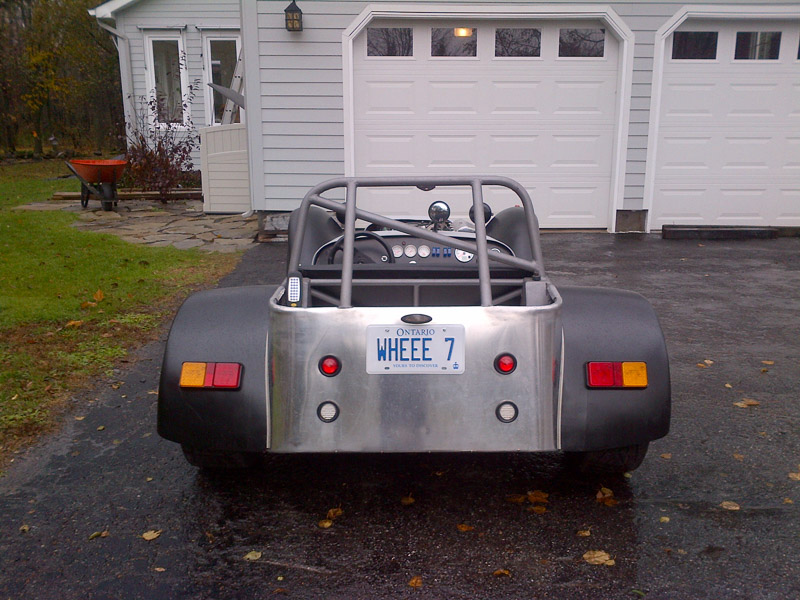
Scott:
“We were building a Super 7 for Bruce. We got really tired and a bit discouraged and he sold it. In the late 2000s the fourth owner asked me if I wanted to buy it and when I looked at it, it hadn’t changed since the day I said goodbye. I thought it would take about a year to finish. About ten years later I got it insured and plated and on the road.
“I have made all items that I could and purchased those where it made sense. The drive train is Toyota 4AGE 20 valve, so it has three ECUs. The trani is 1986 Corolla GTS. The rad is SCION X something racing. Looks as if it were made for this car. I fabricated all the sheet metal, headers, and the fiberglass molding and parts.
“It is 50% stiffer than the original 7. How do I know? I twisted the car and measured the load and angle of twist.”
Read the next installment in the series: Radio-controlled racing cars and … a curb!




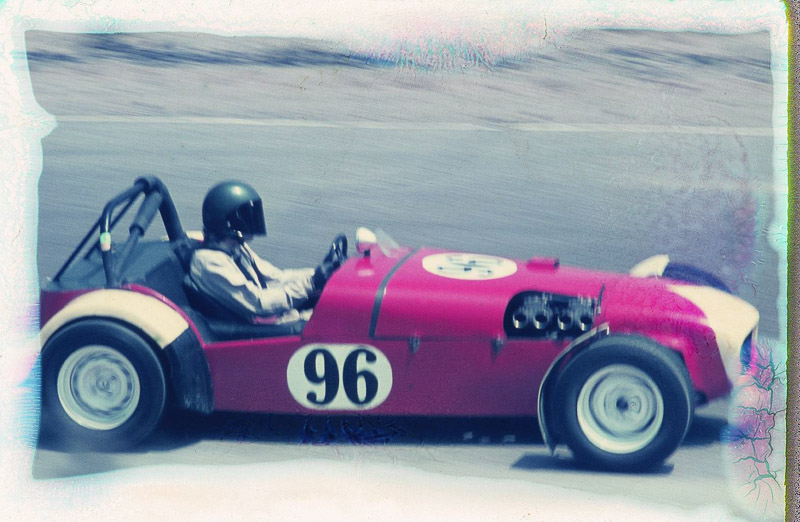
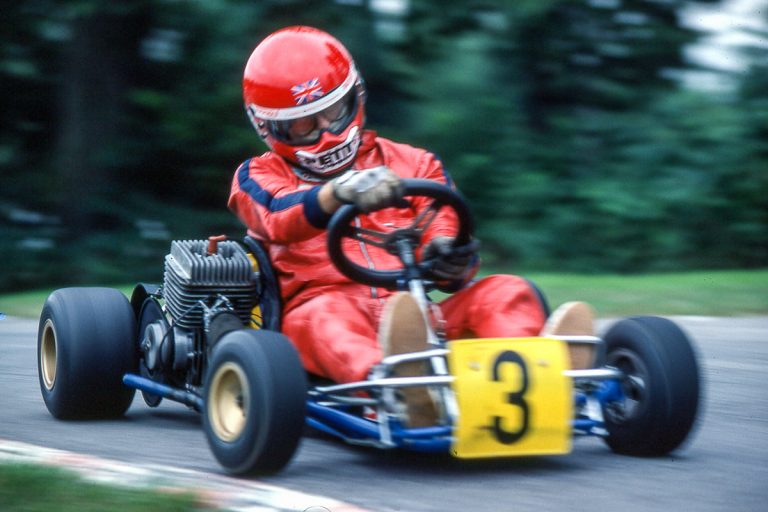
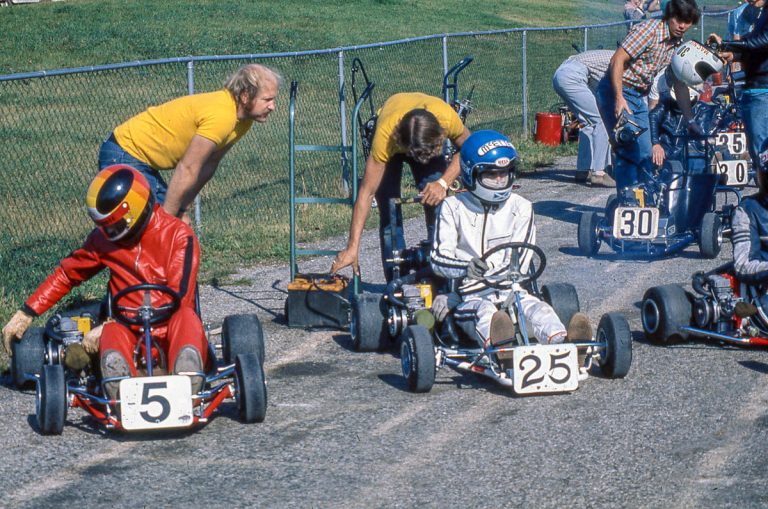
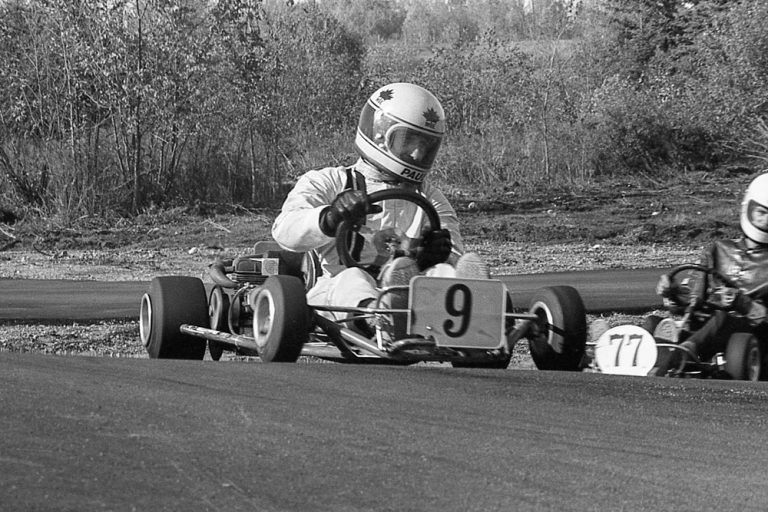
Bruce has (had) my poster of the Player’s Formula B Championship with the “Team Ugly” Brabham front and centre! He was to have it mounted , along with my Peter Ferguson Samsonite Chevron poster (signed by Sir Jackie`Stewart)…things went ‘south: and I never got them back!
Both cars owned by Martin Handforth and sold and delivered to California for US$20K!!!! Included a spare Brabham chassis; engine and the complete running cars…oh, and truck and trailer.
$20,000?? Dang, that’s cheap for all of that…
I think I may have had a small part to play in that Ice Racing escapade. Not 100% sure of the year, but Scott McKenzie had just prepped a new set of studded snow tires for the race. However, once you have installed the new studs, they will just fly off the tire at racing speeds unless they have been very carefully bedded in. The best way to do that was to put the tires on a car and drive it sedately for 20 or 30 miles, being very careful not to spin the tires or slide the car. The problem was that studded tires were illegal for road use in Ontario.
Scott knew that I had a street Cortina, so he asked me if I could help him to bed in the studs. Of course I said “Yes”, anything to be involved in Motorsport. So, on the Saturday before the race, I drove over to Scott’s house, where we swapped my wheels for his new race tires. Then I had what can only be described as a nerve-wracking drive to the nearest bridge to “la belle province (Québec)” where studded tires were permitted. Those frickin’ tires were NOISY! I had visions of being pulled over by the Ontario cops and winding up in jail, trying to explain the benevolent nature of my undertaking.
Anyway, nothing happened, I bedded in the tires, and came back to Scott’s place under cover of darkness. Wheels were swapped back, and Scott went racing the next day. I like to think I played my small part well.
Haha… now THAT’S funny… I can see you doing that too. 🙂